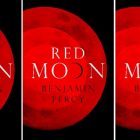The Acrostic: A Love Story

Guest post by Bridget Lowe
Most of us wrote them in grade school, our names printed in large letters down the left margin and traced over with marker, our early views of ourselves summed up in a handful of lively adjectives. A few years ago, when leaving for graduate school, I received a particularly excellent one from a young person I’m close to, the “R” of my name yielding the memorable “rosy.” I was flattered by the poem–what a rare gift–and in addition, by how specific the poem was to me. I am rosy, I thought. This poem is about me.
The acrostic has a way of doing that to you–its flattery is complete and convincing. Because the acrostic (often) incorporates the name of its subject into the form, the poem essentially honors its recipient twice, in both form and content. More powerfully, the effect of seeing one’s own name written down appeals to our conflation of our name with our “self,” as if the written letters that make up our name are somehow a transliteration of our identity.
According to the always trusty Princeton Encyclopedia of Poetry and Poetics, the acrostic form didn’t originate in written texts but is speculated to be linked to early mnemonic devices developed to encourage oral transmission of sacred texts. In addition to such a utilitarian explanation, the entry also allows for a certain “mystical significance” to the form as well. However you interpret terms like sacred and mystical, one thing is certain–the acrostic form has been around for a very long time and has kept some very good company.
In brief, during the eighth and ninth centuries, Charlemagne’s empire was a thriving intellectual community focused on the preservation and propagation of scholarly and holy texts, and his court produced countless carmina figurata (as the acrostic was known to poets of the period) in honor of their king, exhaustively praising his virtues and generally fawning. A funny detail regarding these acrostics is that many of them use Charlemagne’s literati nickname of “King David” (several of the court scholars adopted Roman throwback titles in affirmation of their own scholarly goals) so that surviving acrostics being penned by mega-talents Alcuin and Theodulf are often addressed to a “David” rather than a Charlemagne.
And just when the form seems to be getting a little stale, leave it to that rogue Francois Villon to make the acrostic something raw, clever and sexy in the fifteenth century. He uses the acrostic to serve himself (and occasionally a lady love or friend) rather than a king. In his introduction to his translation of The Poems of Francois Villon, Galway Kinnell characterizes Villon’s use of the acrostic as an act of self-proclamation, noting the way he “stitches his signature…down the left-hand edge of certain ballades.” I love how Kinnell highlights the visual element of the form here, as the poet’s signature embedded in the text invokes a detail more common to a painting than to a poem.
The woodcut below is from the first 1489 edition of Villon’s works, with the acrostic of his first name below (“Francoys”).
While it’s difficult to make out, the letters are visible down the left side. Below is the final stanza of a different Villon ballade, “There’s no care except hunger,” as translated by Kinnell, in which Villon also uses acrostic:
Verity, are you ready to hear it?
In sickness alone is there joy
Life’s true stories are tragedies
Louts are the only knights errant
Only in screeches are there melodies
Nor any cool heads but lovers.
Considering that the content of this stanza is reflective of the poem as a whole, we can distinctly see the exceptional gift the acrostic poem offers. If the form is his name, and his name is him, the contents of the form are the contents of his form–this is what’s inside of him, this is what he contains.
When I started writing acrostic poems ten or so years ago, I didn’t take it very seriously and actually thought I was making fun of a childhood activity popularized by well-meaning homeroom teachers. They were also great diversions at office jobs. Later on, I wrote them for my “beloved” (a gesture used by writers from Boccaccio to Poe) or sent them in letters to friends, always using the recipient’s name as the impetus. And strangely, over time I’ve found that the form actually offers me very specific gifts I can’t find anywhere else. Namely, it releases me from all narrative responsibility and places the focus on words–where my focus should be. “What should happen next?” or “What does this poem mean?” (both terrible questions to be thinking about while writing) become “What are some words that start with the letter C?–or R? or E?”
In the case of Villon, Kinnell concludes that passages containing complicated acrostics lose something in content, which frees him a bit as a translator “to take the liberties necessary to reproduce the acrostics.” I am glad that he found a way to do so, in spite of “the shortage, alas, of English words starting in V.”
Photo credit: Britannica Online Encyclopedia.
This is Bridget’s third post for Get Behind the Plough.



